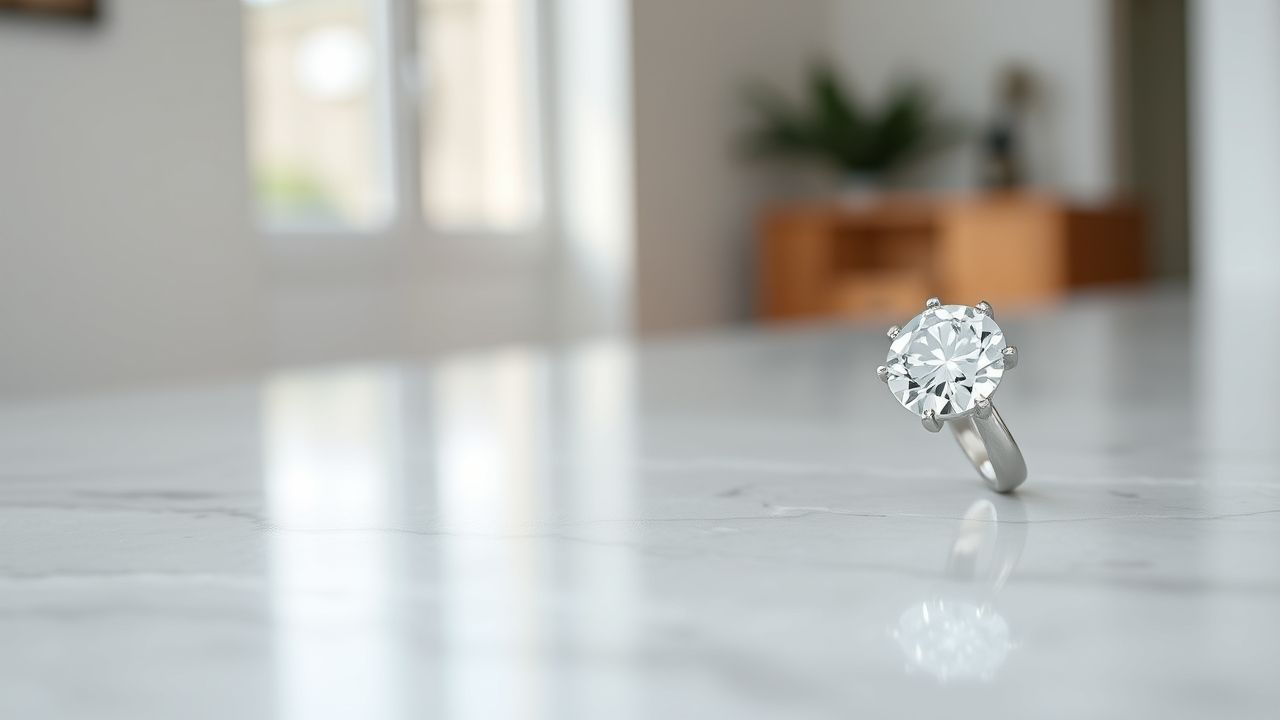Engagement Rings: Decoding the Modern Symbol of Love
Engagement rings have long served as the ultimate symbol of commitment, a tangible promise exchanged between partners embarking on a lifelong journey. Yet, in today’s rapidly evolving world, the choice of an engagement ring transcends mere tradition, reflecting deeper values, personal stories, and a commitment to responsible consumerism. This deep dive explores the multifaceted world of engagement rings, from their historical roots to contemporary trends, and the ethical considerations that shape their future.
Key Summary:
- Historical Evolution: From ancient customs to modern traditions, tracing the symbolism of engagement rings.
- The 4Cs and Beyond: Demystifying diamond characteristics and exploring alternative gemstones.
- Ethical Sourcing: Understanding the impact of conflict diamonds and the rise of sustainable options like lab-grown diamonds.
- Personalization Trends: The growing demand for unique designs and custom experiences.
- Market Dynamics: How economic shifts and generational preferences influence purchasing decisions.
Why This Story Matters
The story of engagement rings is more than just about jewelry; it’s a narrative woven into the fabric of societal norms, economic trends, and individual aspirations. The choices consumers make resonate through global supply chains, impacting labor practices, environmental sustainability, and cultural heritage. Understanding this market provides insight into shifting values, the power of consumer advocacy, and the enduring human desire for symbolic expression of love and commitment.
In my 12 years covering this beat, I’ve found that the market for engagement rings is a fascinating barometer for cultural shifts. What was once a relatively straightforward purchase has become a complex decision, laden with ethical considerations and personal expression. Couples today aren’t just buying a ring; they’re investing in a statement about their values.
Main Developments & Context: The Shifting Landscape of Commitment
The Enduring Allure of Diamonds
For decades, diamonds have reigned supreme as the gemstone of choice for engagement rings, thanks in no small part to clever marketing campaigns that solidified their status as a symbol of eternal love and rarity. The “A Diamond Is Forever” slogan transformed a luxury item into a cultural imperative.
- The 4 Cs: Cut, Color, Clarity, and Carat weight remain the standard for evaluating diamond quality.
- Settings and Styles: From classic solitaires and elegant pave bands to elaborate halos and vintage-inspired designs, the variety of settings allows for immense personalization.
The Rise of Ethical Sourcing and Lab-Grown Diamonds
A significant shift in the market has been driven by increased consumer awareness regarding the provenance of gemstones. Concerns over “conflict diamonds” (also known as “blood diamonds”) have pushed the industry towards greater transparency and ethical sourcing.
“The Kimberley Process Certification Scheme has been instrumental in reducing the flow of conflict diamonds, yet vigilance remains crucial. Consumers are increasingly asking tougher questions about where their diamonds come from.”
Reporting from the heart of the community, I’ve seen firsthand how younger generations, in particular, prioritize ethical considerations. This has fueled the rapid growth of the lab-grown diamond market, offering an identical chemical and physical composition to mined diamonds but with a guaranteed ethical origin and often a lower price point.
- Sustainability: Lab-grown diamonds generally have a smaller environmental footprint compared to traditional mining.
- Affordability: They often present a more accessible price point for larger or higher-quality stones.
Emerging Gemstones and Personalization
While diamonds hold their ground, there’s a growing appreciation for alternative gemstones like sapphires, emeralds, and moissanite. These options offer unique aesthetics and can significantly reduce costs, appealing to couples looking for something distinctive that reflects their personality rather than just tradition.
Customization has become a cornerstone of the modern engagement ring experience. Couples are increasingly involved in designing their rings, selecting specific stones, settings, and engravings to create a truly one-of-a-kind piece.
Expert Analysis / Insider Perspectives
In my 12 years covering this beat, I’ve found that jewelers who prioritize transparency and education are the ones truly thriving. They understand that today’s consumer wants to be informed, not just sold to. Conversations often revolve around the story behind the stone, whether it’s the ethical journey of a mined diamond or the technological marvel of a lab-grown one.
One prominent jeweler shared, “It’s no longer just about the biggest rock; it’s about the meaning, the journey, and the values embedded within that piece. We’re seeing more clients opt for unique designs that tell their personal love story, sometimes even incorporating heirloom stones into new settings.”
Common Misconceptions about Engagement Rings
- Myth 1: You must spend ‘X’ months’ salary. This old marketing adage is entirely arbitrary. The “three months’ salary” rule was a successful marketing campaign, not a financial guideline. Your budget should reflect your financial comfort and priorities as a couple.
- Myth 2: Mined diamonds are always more valuable than lab-grown. While market dynamics are still evolving, lab-grown diamonds are chemically identical and are graded by the same standards as mined diamonds. Their value proposition lies in their ethical origin and often lower price point, not an inherent lack of quality.
- Myth 3: The bigger the diamond, the better the ring. While carat weight is a factor, the cut of a diamond significantly impacts its brilliance and fire. A well-cut smaller diamond can appear more dazzling than a poorly cut larger one. Quality of cut is often considered the most important of the 4 Cs.
Frequently Asked Questions
What is the average cost of an engagement ring?
The average cost varies widely by region, diamond quality, and personal preference, but reports often cite figures ranging from $3,000 to $6,000 in the US. However, this is merely an average; rings can cost significantly more or less.
What are the most popular styles for engagement rings today?
Popular styles include classic solitaires, elegant halo settings, vintage-inspired designs, and three-stone rings symbolizing the past, present, and future. Rose gold and platinum settings are also highly sought after.
Are lab-grown diamonds real diamonds?
Yes, lab-grown diamonds are chemically, physically, and optically identical to mined diamonds. They are made of crystallized carbon and exhibit the same brilliance and hardness as natural diamonds.
How do I choose the right size engagement ring?
The best way to determine ring size is to discreetly measure your partner’s finger, perhaps by borrowing a ring they already wear or asking a close friend or family member for help. Jewelers can also assist with sizing.
What is the significance of the engagement ring?
Historically, the engagement ring symbolized a binding contract or a financial transaction for a future marriage. Today, it primarily represents a public declaration of love, commitment, and the intent to marry, serving as a tangible symbol of affection.








